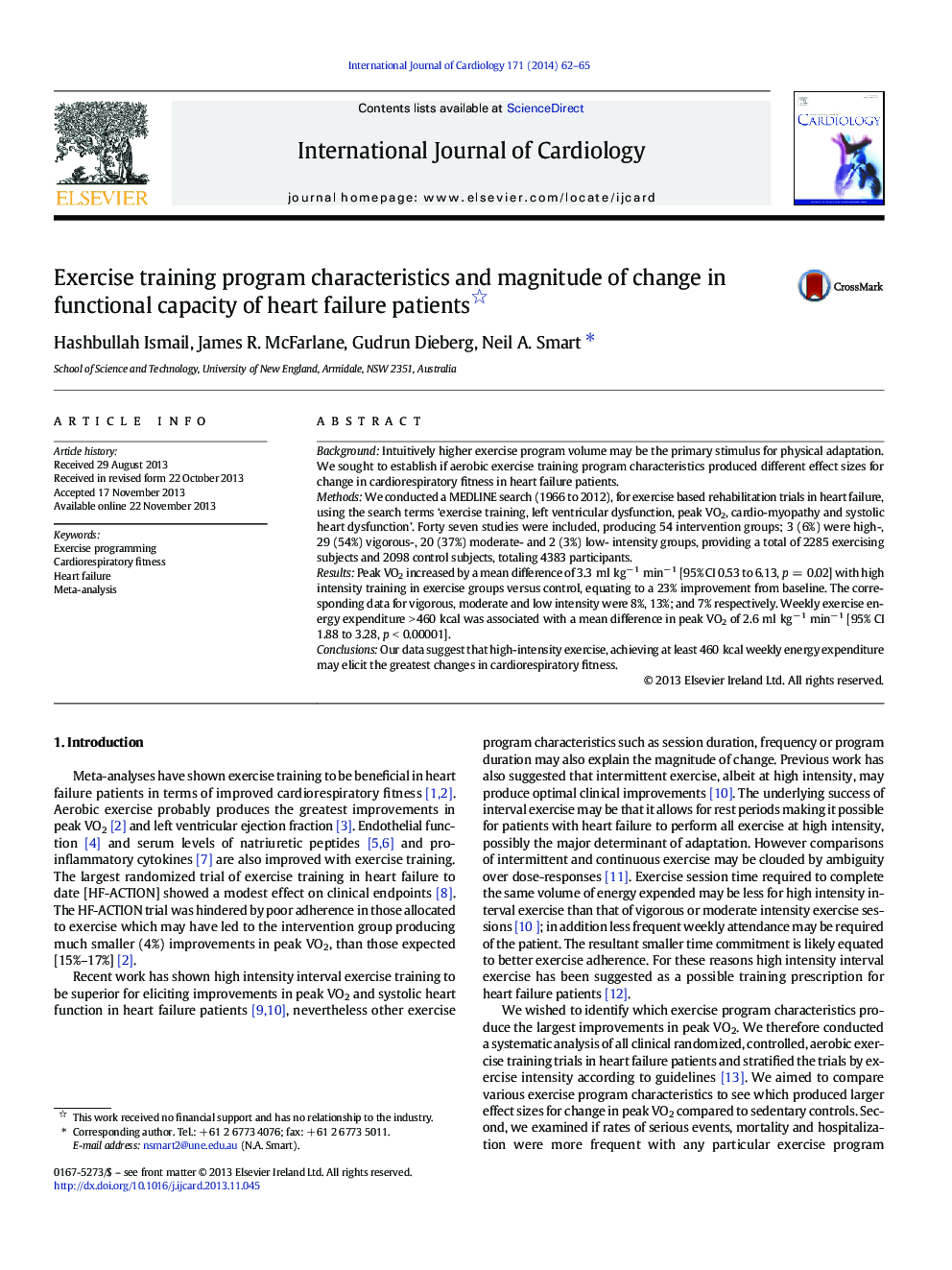| Article ID | Journal | Published Year | Pages | File Type |
|---|---|---|---|---|
| 5972717 | International Journal of Cardiology | 2014 | 4 Pages |
BackgroundIntuitively higher exercise program volume may be the primary stimulus for physical adaptation. We sought to establish if aerobic exercise training program characteristics produced different effect sizes for change in cardiorespiratory fitness in heart failure patients.MethodsWe conducted a MEDLINE search (1966 to 2012), for exercise based rehabilitation trials in heart failure, using the search terms 'exercise training, left ventricular dysfunction, peak VO2, cardio-myopathy and systolic heart dysfunction'. Forty seven studies were included, producing 54 intervention groups; 3 (6%) were high-, 29 (54%) vigorous-, 20 (37%) moderate- and 2 (3%) low- intensity groups, providing a total of 2285 exercising subjects and 2098 control subjects, totaling 4383 participants.ResultsPeak VO2 increased by a mean difference of 3.3 ml kgâ 1 minâ 1 [95% CI 0.53 to 6.13, p = 0.02] with high intensity training in exercise groups versus control, equating to a 23% improvement from baseline. The corresponding data for vigorous, moderate and low intensity were 8%, 13%; and 7% respectively. Weekly exercise energy expenditure > 460 kcal was associated with a mean difference in peak VO2 of 2.6 ml kgâ 1 minâ 1 [95% CI 1.88 to 3.28, p < 0.00001].ConclusionsOur data suggest that high-intensity exercise, achieving at least 460 kcal weekly energy expenditure may elicit the greatest changes in cardiorespiratory fitness.
